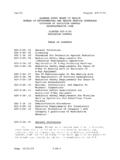Transcription of Result from Dagstuhl Seminar on Demarcating …
1 user experience WHITE PAPER Bringing clarity to the concept of user experience Result from Dagstuhl Seminar on Demarcating user experience , September 15-18, 2010 February 11, 20112 Editors: Virpi Roto Nokia Research Center, now the University of Helsinki Finland Effie Law University of Leicester UK Arnold Vermeeren Delft University of Technology The Netherlands Jettie Hoonhout Philips Research The Netherlands 3 Contributors: Nigel Bevan Professional Usability Services UK Jan Blom Nokia Research Center Switzerland Mark Blythe University of Northumbria UK Elizabeth Buie Luminanze Consulting USA Georgios Christou European University Cyprus Cyprus Gilbert Cockton University of Northumbria UK Sarah Diefenbach Folkwang University Germany David Gilmore Logitech USA Jan Hartmann Detecon International UK Marc Hassenzahl Folkwang University Germany Kristina H k University of Stockholm Sweden Kasper Hornbaek University of Copenhagen Denmark Evangelos Karapanos Eindhoven University of Technology The Netherlands Jofish Kaye Nokia Research Center USA Turkka Keinonen Aalto University Finland Kyle Kilbourn University of Southern Denmark Denmark Joke Kort TNO Information & Communication Technology The Netherlands Marek Kowalkiewicz SAP Australia Masaaki Kurosu Open University of Japan Japan Kari Kuutti University of Oulu Finland Sascha Mahlke USEEDS Germany Ian McClelland Independent consultant UK Ingrid
2 Mulder Delft Univ. of Technology, Rotterdam University The Netherlands Marco Rozendaal Symbiont Innovation The Netherlands Noam Tractinsky Ben-Gurion University of the Negev Israel Kaisa V n nen-Vainio-Mattila Tampere University of Technology Finland Jasper Van Kuijk Delft University of Technology The Netherlands Paul van Schaik Teesside University UK Valentijn Visch Delft University of Technology The Netherlands Peter Wright Newcastle University UK 4 P R EF A C E The term user experience (UX) is widely used but understood in many different ways. The multidisciplinary nature of UX has led to several definitions of and perspectives on UX, each approaching the concept from a different viewpoint. Existing definitions for user experience range from a psychological to a business perspective and from quality centric to value centric. There is no one definition that suits all perspectives. A collection of UX definitions is available at The term user experience is often used as a synonym for usability, user interface, interaction experience , interaction design, customer experience , web site appeal, emotion, wow effect , general experience , or as an umbrella term incorporating all or many of these concepts.
3 A clear description of UX would help to: Teach the basics of user experience Communicate the meaning of the term to people unfamiliar with it Clarify different perspectives on UX amongst UX researchers and practitioners Advance UX as a research field Ground practical UX work in commercial, industrial and government organizations This UX White Paper describes what in discussions with UX professionals were seen as the core concepts of UX and clarifies the different perspectives on UX. The paper is prepared as a joint effort by a group of leading UX researchers and practitioners, and is freely available at Disclaimer: The UX White Paper is a Result from discussions among the invited experts of the Demarcating user experience Seminar , so it is based on the contributors expertise and judgment. While we acknowledge the influence of existing UX literature on our thinking, we are, unfortunately, unable to provide a comprehensive list of literature references in this white paper.
4 5 1. INTRODUCTION The field of UX deals with studying, designing for and evaluating the experiences that people have through the use of (or encounter with) a system. This use takes place in a specific context, which has an impact on, or contributes to, the UX. UX can be viewed from different perspectives: it can be seen as a phenomenon, as a field of study, or as a practice. To understand this distinction, consider the following analogy: health as a phenomenon, medicine as a field of study, and a doctor s work as a practice. Each of these views can be further detailed as follows: UX as a phenomenon: Describing what UX is and what it is not Identifying the different types of UX Explaining the circumstances and consequences of UX UX as a field of study: Studying the phenomenon, for example how experiences are formed or what a person experiences, expects to experience , or has experienced Finding the means to design systems that enable particular UXs Investigating and developing UX design and assessment methods UX as a practice: Envisioning UX, for example, as part of a design practice Representing UX , for example, building a prototype to demonstrate and communicate the desired UX to others Evaluating UX Delivering designs aimed at enabling a certain UX In this paper, we mainly focus on UX as a phenomenon and UX as a practice.
5 6 2. UX AS A PHENOMENON The notion of experience is inherent to our existence as people. experience in general covers everything personally encountered, undergone, or lived through. user experience differs from experiences in a general sense , in that it explicitly refers to the experience (s) derived from encountering1 systems2. UX as a phenomenon can be described as follows: UX is a subset of experience as a general concept. UX is more specific, since it is related to the experiences of using a system UX includes encounters with systems not only active, personal use, but also being confronted with a system in a more passive way, for example, observing someone else using a system UX is unique to an individual UX is influenced by prior experiences and expectations based on those experiences UX is rooted in a social and cultural context What is UX not? UX is not technology driven, but focuses on humans UX is not about just an individual using a system in isolation UX is not just cognitive task analysis, or seeing users as a human information processor.
6 UX is not the same as usability, although usability, as perceived by the user3, is typically an aspect contributing to the overall UX UX design is more than user interface design UX differs from the broader concepts of brand/consumer/customer experience , although UX affects them and vice versa Although user experience has a narrower scope than experience , user experience is still an umbrella term that may refer to several forms of user experience . More specific terms may help in explaining the intended perspective. We describe three different perspectives on UX that people may take when referring to UX. Note that these terms are similar to those used in experience design in general. 1 Using, interacting with, or being confronted passively 2 System is used to denote products, services, and artifacts separately or combined in one form or another that a person can interact with through a user interface.
7 3 Objective usability measures such as task completion time or the number of clicks and errors are not good UX measures, since they do not tell if the person perceived them as good or bad. 7 Experiencing The verb experiencing refers to an individual s stream of perceptions, interpretations of those perceptions, and resulting emotions during an encounter with a system. Each person may experience an encounter with a system in a different way. This view emphasizes the individual and dynamic nature of experiencing the encounter with a system. In practice, designers focusing on experiencing usually pay attention to specific interaction events, which may have an impact on the user s emotion ( , in game design, scoring a goal or the appearance of a frightening character). Evaluation of experiencing could focus on how a single person experiences the encounter with a system from moment to moment ( , measuring emotions at various moments in time to uncover which elements in an interaction may induce which emotions).
8 A user experience The noun user experience refers to an encounter with a system that has a beginning and an end. It refers to an overall designation of how people have experienced (verb) a period of encountering a system. This view emphasizes the outcome and memories of an experience rather than its dynamic nature. It does not specifically emphasize its individual nature because a user experience can refer to either an individual or a group of people encountering a system together. Typical examples of this perspective are placing the focus of UX design on a specific period of activities or tasks ( , visiting a web site), the narratives of games ( , building up suspense and having a happy end) or the outcome after using a system ( , having learned a dance with a dance game). Evaluation here could focus on methods that can provide an overall measure for the experience of a certain activity or system use ( , a retrospective questionnaire method).
9 Co- experience Co- experience , shared experience , and group experience refer to situations in which experiences are interpreted as being situated and socially constructed. The emphasis is not only on encountering a system, but also on people constructing and at the same time experiencing a situation together. If these terms are used without considering the role of a specific system in the experience , then it no longer makes sense to talk about user experience , but more appropriately about experience in general. When focusing on socially constructed experiences, group behavior and/or group attitude is of importance. Designing with a focus on socially constructed experiences may Result in, for example, a platform system providing general constraints and affordances for multiple people to act and interact rather than focusing on the determined flow of interaction and outcome for one person. For evaluation, this could mean including indirect group experience measures such as the number and nature of encounters between people.
10 8 Figure 1. UX over time with periods of use and non-use Figure 2. Time spans of user experience , the terms to describe the kind of user experience related to the spans, and the internal process taking place in the different time spans. 3. T I ME SPAN S OF user EX PERI EN C E While the core of user experience will be the actual experience of usage, this does not cover all relevant UX concerns. People can have indirect experience before their first encounter through expectations formed from existing experience of related technologies, brand, advertisements, presentations, demonstrations, or others opinions. Similarly, indirect experience extends after usage, for example, through reflection on previous usage, or through changes in people s appraisals of use. This, and the contrasts above between experiencing and an experience , raise the question of the appropriate time span when focusing on UX. At one extreme, we could focus solely on what someone has experienced for a very brief moment , visceral responses during usage.







